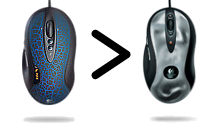 Despite the tens of millions of netbook-toting Facebook gamers and monogamous citizens of Azeroth, there is still a large subset of PC gamers that fit the ‘hardcore’ mould. They worship the platform as much as the apps that run on it, and as a consequence, get pulled into the never ending incremental upgrade cycle.
Despite the tens of millions of netbook-toting Facebook gamers and monogamous citizens of Azeroth, there is still a large subset of PC gamers that fit the ‘hardcore’ mould. They worship the platform as much as the apps that run on it, and as a consequence, get pulled into the never ending incremental upgrade cycle.
These nameless supporters of the Taiwanese economy regularly scan their tech-store e-newsletters for scorching hot deals on hardware that wasn’t even on their radar until a thumbnail of it, accompanied by red reduced-price text, dared them to click and buy. Gigabytes become terabytes, cool ‘n’ quiet becomes solid-state, on-board becomes dedicated, 4:3 becomes widescreen, and single panels become dual displays.
My Shady Past
I like to think I’m not one of those people. I ought to know because I used to be. I am of that generation whose M.O. was best encapsulated by John Dvorak’s early-90s assertion that PC users need to upgrade every three years to the best possible system they can afford, in order to reap all that the latest advances offered. (This is when a system would run you $1,500-$2,000, not $500-$1,000.) His statement was made when the PC’s open-endedness was transforming it from a squeaking four-colour loser of a gaming platform into the undisputed king of the hill, pushing the then-more-capable Amigas, Ataris, and Macs aside.
With that open-endedness came growth: sound cards, higher resolution displays, 3D graphics cards, and CD-ROM add-on kits. Back then, when you upgraded something, whether or not it actually mattered, you could tell the difference. Suddenly, you could play Doom smoothly at full screen, listen to digitized sound, notice the realistic shading on that polygonal character’s pointy head, or jack up the resolution to something that, strangely, gamers over a decade later are calling HD.
It’s debatable whether an upgrade today has the same reality-shifting impact it did a decade or two ago; yet, although not as prevalent, being a PC gamer and a ‘hardcore’ PC enthusiast can still go hand in hand. Truth be told, it’s what makes the subculture special. Yes, it’s just rig porn, but it’s authentically geeky, and I really can’t think of a console equivalent of this behaviour. There’s console modding, but that’s more of an all-out, goal-oriented project than frivolous and finicky incremental PC upgrades. A stock PC, with its creaky mouse and on-board graphics is just crap for many games — it begs to be upgraded. A stock console setup is often all you’ll ever need.
Implausible:
Console Gamer A: Shit, yo. They’s a sale on Mad Catz controllers at Walmart.
Console Gamer B: Bustacap! This is they model with the stiffer buttons that make they thumbs ache after eight hours of UFC 2010? And the mushy start button you gotta jab with the end of a pen?
Console Gamer A: Double true. What else yo. Two words: translucent purple.
Console Gamer B: Holllaaaa…
Console Gamer A: This is authentic Mad Catz.
Console Gamer B: Paw, print!
Console Gamer A: We order a few to save on the shipping!
Console Gamer B: Now you talkin. We order from they innanet. But first, pass that bag of Doritos that’s under the couch.
Plausible:
PC Gamer A: Have a gander at these new headphones I got for only 60 bucks.
PC Gamer B: Crom’s bones!
PC Gamer A: They sport a mini-LCD that hangs right at eyebrow level, so at any time I can look up and see my RAM and CPU usage.
PC Gamer B: You’re… like a starfighter pilot.
PC Gamer A: Huzzah! And, I customized the readout to cycle among system status, and the last three tweets from Ars Technica.
PC Gamer B: Man alive! Are the cans glowing? Pulsing? Breathing?
PC Gamer A: Indeed. The ‘phone lights cycle through a customized spectrum. Right now, I have them shifting back and forth between a regal purple and a camembert jaune.
PC Gamer B: So much drooool!
PC Gamer A: If you need to wipe up, there’s a roll of toilet paper on my desk.
Cursed, Poisonous Web Sale
Even when I was putting together a new PC a few months back to replace my five-year-old machine (I said I wasn’t one of those people, didn’t I?), the thought of dropping my Logitech MX 518 had never crossed my mind. It had served me well over the years. It was worth keeping. Then, out of nowhere, my friend IMed me:
Him: are you looking for a new mouse?
Me: Churl. How *dare* you even ask. My friend, my mouse and I have a relationship. It’s *symbiotic*. We are on a first-name basis: I call him ‘Max,’ and he calls me ‘Sir.’ He knows me so well, there have been occasions where I’ve left the room to get a drink while he takes control, Kit style, and scolds my keyboard for not helping out. Asking me if I’m looking for a new mouse is like asking me if I’m looking for a new *mother*.
Him: well the logitech g5 is on sale right now at future shop for $35
Me: 16548136554654
Him: was that your cc number?
Me: ahs hit brb…
As I stared at my ‘hi you bought a mouse’ email, I wondered what had happened. This model normally goes for some $70. At half price, it was grabbed by the ankles and yanked down to impulse-purchase level. ‘Impulse purchase’ is just another way of saying ‘zero justification.’ Out of principle, I felt the need to fabricate some.
1. Braiding means no tangling — The G5 cord is wrapped in some tightly woven net that prevents it from sticking to any corners or crevices around the desktop. Never again will I have to use ‘ran out of cord’ as a reason for screwing up in-game, and can rely on ‘my mouse hit the keyboard’ like there’s no tomorrow. The only problem here is my Func mousing surface comes with a mouse cord clip that accomplishes the same thing. Redundant. Next.
2. Rich texture — Since the MX 518 has a glossy surface, there’s really nowhere for dust, dirt, and oil to go. It just accumulates on the mouse surface. After a while, you end up with this crusty layer, necessitating a thorough wipe-down. The G5’s surface is textured. All dust and dirt will be absorbed in the teeny little grooves and notches, ensuring you’ll never have to deal with residue again! Actually, this is kind of gross.
3. Higher DPI — My MX 518 can track at 1800 DPI. The G5 can do 2000 DPI. This minor improvement seems like solid boasting ground until you realize that companies like Razer are making gaming mice that do 3500 and 5600 DPI.
4. Cool lights — While the MX 518 had buttons to switch the DPI setting on the fly, you were doing this blindly. The G5 has the same three-setting switch, but improves this by including an indicator light! Unfortunately, your hand tends to cover it, negating its usefulness. (Still, bonus points since the lit-up DPI label nonsensically looks like the guy from Lode Runner. Awww!)
5. Slippery feet — The box states the feet are made from polytetrafluoroethylene. I believe that’s scientist speak for Teflon. I’m not sure if my MX 518 feet were Teflon, but I can just pretend they weren’t and claim the non-stick goodness on the G5 will help me hijack the leaderboards in the Korean StarLeagues. The down side is I’m not sure if I ever want to boast about any hardware I own and include the word ‘Teflon’ because I kind of like the fact that girls will talk to me.
6. Configurable weights —  The G5 series comes with a tray that slips in the bottom of the mouse. In this tray are eight holes where you can insert any combination of 4.5-gram and 1.7-gram weights. They even come with their own case. It’s like having an awesome little tin of lethal mints. I secretly admit that this is a nice luxury perk, but there’s no chance in hell this would be my reason for buying; I just don’t see anyone really caring about this degree of weight customization:
The G5 series comes with a tray that slips in the bottom of the mouse. In this tray are eight holes where you can insert any combination of 4.5-gram and 1.7-gram weights. They even come with their own case. It’s like having an awesome little tin of lethal mints. I secretly admit that this is a nice luxury perk, but there’s no chance in hell this would be my reason for buying; I just don’t see anyone really caring about this degree of weight customization:
G5 Owner A: I like my G5 weight done ‘medium-well,’ hence, I am a 6×4.5g + 2×1.7g kind of guy. How about you?
G5 Owner B: Hmm, well until you asked, I had always fancied myself as more of an ass man, but now that you bring it up, yes, I do like that six-four-five-plus-two-one-seven config, with the one-sevens on the left side, mind you. When I’m fragging, it feels like I’m under water, and my mouse movements are being guided by the hand of god.
G5 Owner C: Were you born in your house? If you’re not using four four-point-fives in a four-corner spread, you may as well go back to using a sharp rock to cut your uncooked meat. With my config, the weight distribution is perfect for the mouse’s Teflon feet.
G5 Owner B: Why are all the girls are leaving the room?
7. Laser > Optical — I guess at some point, Laser Vs. Optical became the new USB Vs. PS2. As ignorant as it is to say, ‘laser’ just sounds cooler than ‘optical.’ Would you rather have a laser sight on your rocket launcher, or some Panzerfaustian optical sight? Aren’t laser pointers a million times neater than optical pointers? And isn’t an optical pointer just your index finger?
Without knowing the true benefits, I had to defer to various hardware forums and tech article comment threads. Based on my research, it appears that if you believe you’ll get smoother tracking and better accuracy with a laser mouse, your claims “are part of a disease called the numbnuts.” Well thank god for the interweb. I don’t want to be tagged as someone with the numbnuts, so I am putting my flag away.
8. Lean buttons — The mouse wheel, in addition to being able to be pressed like a button, also has left and right lean presses. So now this mouse wheel scrolls up and down, presses down as a button, and tilt-clicks left and right as well. (That sound you just heard was a Mac user tearing off his black turtleneck and throwing it to the ground.) It’s just unfortunate that I don’t play many games that actually have ‘lean’ as a configurable action, and since I don’t plan on installing the Logitech SetPoint configuration software, I can’t easily remap left and right lean to more useful binds, such as ‘SAY fuck you; SAY bitch; QUIT’, or ‘SAY I won’t give you the satisfaction you skilled son of a whore; KILL’.
9. Crysis > He-Man — Both mouse models have inexplicable patterns on them. The G5 can be described by ‘what the fuck is that?’ while the MX 518 can be described by ‘what, the fuck, is that?’ Owning either mouse is like owning a pair of Zubaz pants. How do I choose? Well, if I had to play the pattern association game, I’d say the MX 518 reminds me of the He-Man Battle Armor; the G5 makes me think of the cloak’s visual effects in Crysis. Since I am hetero, the outcome is obvious: the G5 wins.
10. Charitable donations — Now this seems like a win-win: there are gamers in the developing world who could use my old mouse. What better way to prove that my MX 518 is still perfectly good than to play my small part in helping some lad in Zimbabwe get onto the World Cyber Games circuit. When the Net*One Warriors win bronze in Counter-Strike at the 2012 WCG in Linz, Austria, I will be standing on a hilltop, somewhere halfway across the world, with my fist in the air, and a single tear running down my cheek. All I need to do is play my North-American role in getting this fine piece of electronics to another part of the world: throw it in the garbage.
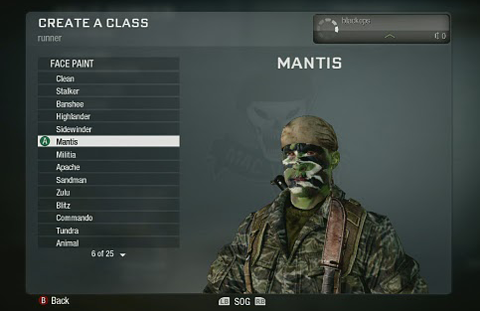
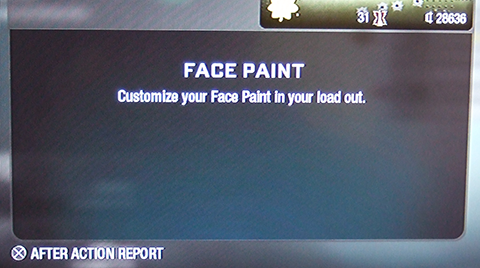
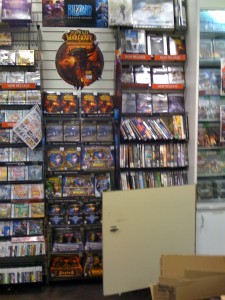
 So Bobby Kotick was
So Bobby Kotick was 




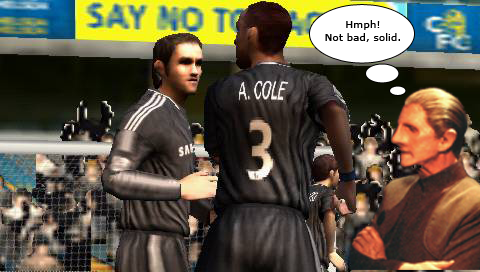


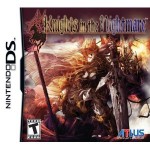
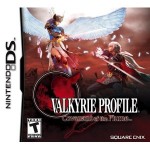


 The G5 series comes with a tray that slips in the bottom of the mouse. In this tray are eight holes where you can insert any combination of 4.5-gram and 1.7-gram weights. They even come with their own case. It’s like having an awesome little tin of lethal mints. I secretly admit that this is a nice luxury perk, but there’s no chance in hell this would be my reason for buying; I just don’t see anyone really caring about this degree of weight customization:
The G5 series comes with a tray that slips in the bottom of the mouse. In this tray are eight holes where you can insert any combination of 4.5-gram and 1.7-gram weights. They even come with their own case. It’s like having an awesome little tin of lethal mints. I secretly admit that this is a nice luxury perk, but there’s no chance in hell this would be my reason for buying; I just don’t see anyone really caring about this degree of weight customization: